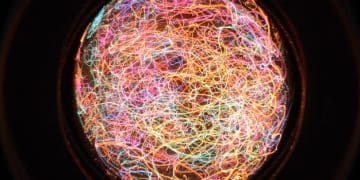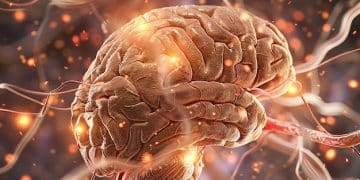The Science of Consciousness: Unraveling Subjective Experience
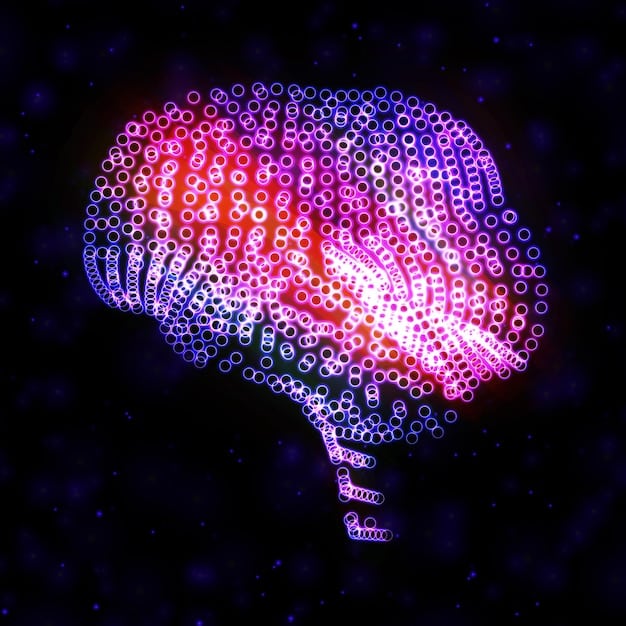
The Science of Consciousness: Exploring the Neural Correlates of Subjective Experience seeks to understand how our brains give rise to personal awareness and the rich tapestry of individual sensory perceptions.
Have you ever wondered why you experience the world the way you do? The feeling of a warm breeze, the taste of your favorite food, the understanding that you are, in fact, *you* – these are all aspects of consciousness. But how does this subjective experience arise from the physical matter of our brains? The Science of Consciousness: Exploring the Neural Correlates of Subjective Experience aims to untangle this profound mystery.
This article delves into the exciting and complex field of consciousness studies, shedding light on the neural processes that may hold the key to understanding what makes us aware.
What is The Science of Consciousness?
The science of consciousness attempts to correlate subjective experiences with objective brain activity. It’s a multidisciplinary field, drawing upon neuroscience, psychology, philosophy, and even computer science to try and answer some of the most fundamental questions about our existence. What neural activity creates a specific experience? What is the difference between being conscious and unconscious? These questions are at the heart of this fascinating area of study.
But how do scientists even begin to study something as elusive as consciousness?
The Challenge of Subjectivity
One of the biggest hurdles in The Science of Consciousness: Exploring the Neural Correlates of Subjective Experience is the subjective nature of consciousness itself. Each individual’s experience is unique, making it difficult to find objective measures. After all, how can we know if what you perceive as “red” is the same as what someone else perceives as “red”?
- Introspection is unreliable: Relying solely on internal reflection can be misleading.
- Reporting bias affects verbal accounts: How people describe their experiences is influenced by personal biases.
- Objective measures are difficult to define: It is hard to know what biological marker to correlate with the experience when experience is so variable.
Neuroscientists use a number of clever tools to understand consciousness.
In spite of the challenges, researchers strive to find objective, measurable correlates of conscious experience.
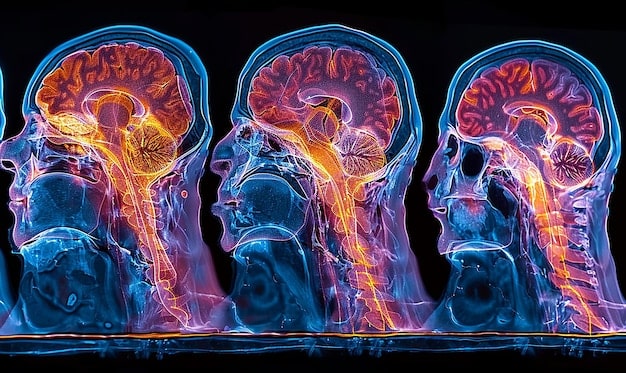
Neural Correlates of Consciousness (NCC)
The core idea behind The Science of Consciousness: Exploring the Neural Correlates of Subjective Experience is that specific neural activity is necessary and sufficient for a particular conscious experience. These are known as the Neural Correlates of Consciousness (NCC).
Scientists look for NCC by comparing brain activity when a person is consciously aware of something versus when they are not. This might involve studying individuals with brain damage, using brain imaging techniques like fMRI and EEG, or even using cleverly designed experiments that trick the brain into and out of awareness.
Methods for Identifying NCC
Researchers employ several methods to pinpoint these elusive correlates. Each approach offers unique insights, paving the way for a deeper understanding of what shapes our conscious experience.
These methods include:
- Brain Imaging: Functional magnetic resonance imaging (fMRI) and electroencephalography (EEG) help to observe brain activity related to conscious states.
- Lesion Studies: Examining the effects of brain damage on consciousness can reveal which areas are critical for awareness.
- Stimulation Techniques: Transcranial magnetic stimulation (TMS) can temporarily disrupt brain activity to determine its role in conscious experience.
By identifying and studying NCC, scientists hope to unlock the secrets of how the brain creates our subjective world. The discovery of NCCs has led to major breakthroughs in our understanding of consciousness.
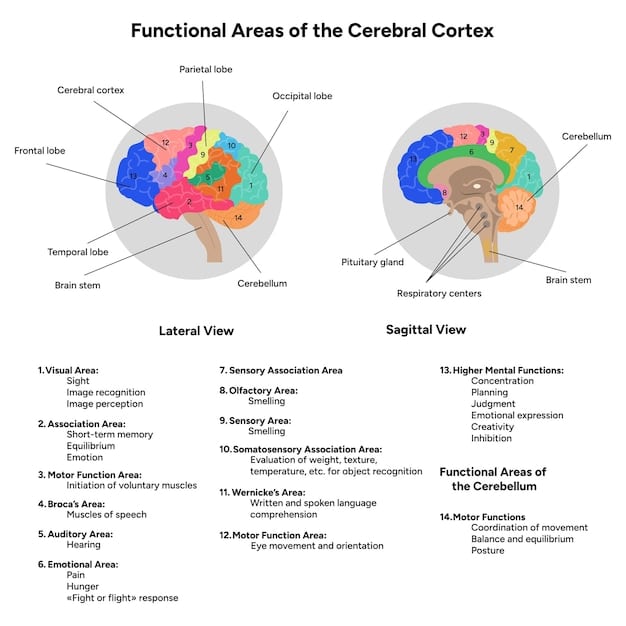
Global Workspace Theory
One prominent theory attempting to explain The Science of Consciousness: Exploring the Neural Correlates of Subjective Experience is the Global Workspace Theory (GWT). This theory proposes that consciousness arises when information is broadcast widely throughout the brain, making it available to various cognitive processes. Imagine a theater stage where different brain regions compete for attention. The information that wins the competition is then broadcast to the “global workspace,” making it consciously accessible.
GWT suggests that we are only consciously aware of information that reaches this global workspace. Unconscious processing, on the other hand, remains localized and does not gain widespread access.
The Brain as a Theater
Central to the Global Workspace Theory is the idea that awareness is like a broadcast to the entire brain. When information becomes globally available, it enters our conscious experience.
Consider these key arguments:
- Information Availability: Consciousness depends on making information accessible to multiple brain areas.
- Attention and Selection: Attention mechanisms select which information gains access to the global workspace.
- Cognitive Integration: Conscious content is integrated with other cognitive processes, such as memory and decision-making.
The Global Workspace Theory provides a compelling framework for understanding how information becomes conscious.
Integrated Information Theory
In contrast to the Global Workspace Theory, Integrated Information Theory (IIT) offers a different perspective on the science of consciousness: exploring the neural correlates of subjective experience. IIT posits that consciousness is not just about the information we process, but also about how integrated that information is. The more integrated and complex a system is, the more conscious it is. IIT proposes consciousness is an intrinsic, fundamental property of any system with integrated information.
IIT attempts to quantify consciousness using a measure called “phi” (Φ), which represents the amount of integrated information in a system. A high phi value indicates a high level of consciousness.
Phi: Quantifying Consciousness
One of the more radical elements of IIT is its attempt to mathematically define and quantify consciousness itself. This approach brings both excitement and scrutiny from researchers.
IIT includes the following concepts:
- Integration: Consciousness depends on how interconnected and unified a system is.
- Information: The amount of specific information a system generates is crucial for consciousness.
- Causality: Conscious experience is a result of cause-and-effect within the system.
While it may seem abstract, Integrated Information Theory offers a fascinating way to conceptualize and measure consciousness.
Altered States of Consciousness
Studying altered states of consciousness, such as those induced by drugs, meditation, or hypnosis, can provide valuable insights into The Science of Consciousness: Exploring the Neural Correlates of Subjective Experience. By observing how brain activity changes during these altered states, scientists can gain a better understanding of the neural mechanisms that underlie normal conscious experience.
For example, psychedelic drugs like LSD are known to dramatically alter perception and thought. Brain imaging studies have shown that these drugs disrupt the normal functioning of brain networks, leading to a more disorganized and chaotic state of consciousness.
Insights from Altered States
By examining what happens when consciousness is significantly changed, researchers can better identify which brain functions are necessary for maintaining our normal waking awareness.
Altered states offer unique windows into consciousness:
- Psychedelics: Substances that can reveal how perception and cognition intertwine.
- Meditation: Practices that demonstrate the brain’s ability to alter awareness.
- Sleep: The study of sleep helps shed light on the neural correlates of lower awareness levels.
Ultimately, examining altered states of consciousness contributes to a comprehensive view of awareness.
| Key Point | Brief Description |
|---|---|
| 🧠 NCC | Neural Correlates of Consciousness are brain activities linked to conscious experience. |
| 🌐 GWT | Global Workspace Theory suggests consciousness arises from widely broadcast information. |
| ⚛️ IIT | Integrated Information Theory says consciousness is about integrated information. |
| 🧪 Altered States | Studying these states helps understanding normal consciousness. |
Frequently Asked Questions
Neural correlates of consciousness (NCC) are the specific brain activities that correspond to conscious experiences. Identifying these activities is fundamental to The Science of Consciousness: Exploring the Neural Correlates of Subjective Experience.
Scientists use various methods to study consciousness, including brain imaging, lesion studies, and examining altered states of consciousness like those induced by meditation or certain drugs.
Global workspace theory suggests that consciousness arises when information is broadly shared across the brain. Only information that is widely broadcast becomes part of the conscious experience.
Integrated information theory posits that consciousness is tied to how interconnected a system is. The theory attempts to define and measure consciousness itself using the concept of “phi.”
Studying altered states of consciousness, such as those from drugs or meditation, provides useful information in The Science of Consciousness: Exploring the Neural Correlates of Subjective Experience by shedding light on how normal awareness arises.
Conclusion
The quest to understand The Science of Consciousness: Exploring the Neural Correlates of Subjective Experience is one of the most ambitious and challenging endeavors in modern science. While much remains unknown, the tools and theories being developed are providing unprecedented insights into the neural underpinnings of awareness.
As research continues, we may one day unlock the profound mystery of how subjective experience arises from the physical matter of the brain, forever changing our understanding of ourselves and the world around us.
